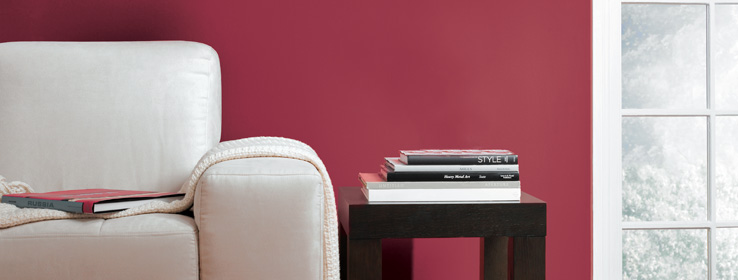"But that color doesn't look anything like the one on the chip!" Most painting contractors have heard a customer say that at one time or another. It's a frustrating dilemma, and especially common with transparent, deep or vivid colors. But you can easily solve it by using a tried-and-tested color palette along with the right basecoat whenever color is important to your client. (And when isn't it?)
Prime with white or gray or topcoat color tint?
The Sherwin-Williams COLOR® system is a palette of more than 1,000 hues created with input from contractors, architects, designers and specifiers. It was also designed with advanced technology to support more accurate color delivery.
Common practice is to use a white primer or one tinted with the topcoat color. However, about 20 percent of the colors in the Sherwin-Williams COLOR® system are maximized when applied over a gray-tinted basecoat. This idea or technology is the Sherwin-Williams Color Prime System. Using a gray basecoat or primer for these colors has several benefits, including better touch-up, superior hide and more uniform color. Painters also save time and money because they can achieve an accurate color match in fewer coats. Best of all, the system is easy to use because Sherwin-Williams has eliminated the guesswork.
How it works
The Sherwin-Williams exclusive Color Prime System is a continuum of gray shades that starts at light gray (P1) and gradually deepens to P6, or the darkest gray. This technology is based on how color pigment scatters and absorbs light.
A primer tinted to the recommended shade of gray creates the ideal balance of light absorption and scattering to achieve the correct color in fewer coats. By working inside the color space of the topcoat color, the right basecoat shade allows the topcoat to more fully and more quickly develop its true color.
Bottom line: You'll achieve true color faster and easier. And, you'll reduce the chances of hearing a customer complain about the color on the wall not matching the color of the chip.
Just follow the directions
How do you know when to use a Color Prime gray shade basecoat? There are two simple ways: Ask your Sherwin-Williams rep or look on the back of your topcoat color chip. If you see a code of P1 through P6, be sure to use a primer tinted the specific shade of gray. Humorous Green (SW 6918) for example, requires a P3 gray shade, while you'd use a P2 gray shade with Nervy Hue (SW 6917). It's that easy.
Real world results
Aldo Marini, owner of Interior Solutions in Cleveland, Ohio, says the Sherwin-Williams gray primer system saves time and money on his new construction residential projects.
"I work with a lot of decorators and high-end builders that have been specifying the deeper colors," he says. "In the past, it often would take us three coats to get the color right. My Sherwin-Williams sales rep knew that was concern for me, and introduced me to the Color Prime System about two years ago."
Using the gray shade primer system, he found, enables him to obtain the same quality results in just two coats. There's no guesswork, since he just has his Sherwin-Williams store add the gray tint specified on the Sherwin-Williams color chip to his favorite PrepRite primer. He will also use a gray-tinted Color-Prime Interior Primer when working with a ColorAccents topcoat.
"In the past, I had shied away from using ColorAccents on new construction, but Im not afraid of using the deep colors anymore," Marini says. "We get really good color accuracy by using the gray primers, and the ability to cover in two coats saves us significantly on labor."
Gray Basecoat Benefits
For certain deep, vivid or transparent colors – about 20 percent of the Sherwin-Williams COLOR® palette – a gray basecoat is your ticket to:
Achieving accurate color match in fewer coats
Better touch-up
Superior hide
Deep, vivid accent colors that look bolder and brighter
More uniform color, less streaking
Eliminating guesswork
Saving time and money
Increasing customer satisfaction







